Describe the Range of Motion Between C1 and C2.
The cervical vertebrae C1 is attached directly to the skull which allows for any nodding lateral motions. The range of motion for rotation at the atlantoaxial joint is 40 range 39-49.

3d Ct Scan Of Upper Cervical Spine C1 C2 Instability Can Easily Be Download Scientific Diagram
The top foremost of the vertebrae C1 allows for a greater range of motion than normal vertebrae.
. These two vertebrae are more responsible for the heads rotational range of motion than from any other joint. What is the range of motion between C1 and C2. The first cervical vertebra C1 is called the Atlas.
16 However results have varied and this range has been noted to be 32 in cadavers 17 752 through radiographic techniques 18 and 43 using computed tomography scanning. What is the range of motion for rotation between C1-C2. For right rotation the opposite occurs.
Approximately 50 of flexion extension of the neck happens between the occiput and C1. We review their content and use your feedback to keep the quality high. C1 serves as a ring or washer that the skull rests upon and articulates in a pivot joint with the dens or odontoid process of C2.
Studies vary but the average range is 0-25 degrees of total movement with more extension than flexion Oatis 2004. However the very first two vertebrae C1 and C2 have the most specialized jobs. Greatest range of motion in any joint.
There are several distinct anatomical regions of the cervical spine including the craniocervical junction C1-C2 articulation subaxial spine and cervicothoracic junction. It is the vertebra that is. Approximately 50 of flexion extension of the neck happens between the occiput and C1.
In the joint between C1 and C2 this pivot. Segmental ROM gradually increased from C2C3 to C5C6 and decreased from C5C6 to C6C7. 2- Describe the range of motion between the skull and C1.
50 of the rotation of the neck happens between C1 and C2. What Whiplash associated disorder does this describe. Experts are tested by Chegg as specialists in their subject area.
Theodontoid process oftheaxisvertebra C2withtheir atlantooccipital CO-Cl andatlantoaxial C1-C2 con-nections which include joints and ligaments butno discs. This region consists of seven vertebrae which are abbreviated C1 through C7 top to bottom. 1 Each of these highly specialized areas plays a unique role in facilitating neck motion in all 3 planes.
The normal ranges of rotation of C1 on C2 are reported to be 50 to each side. 19 Nevertheless this rotational ability of the atlanto-axial joint is possible due to the stabilizing function of 3 primary. 2 pts Describe the range of motion between the skull and C1.
These vertebrae protect the brain stem and the spinal cord support the skull and allow for a wide range of head movement. These are found at the articulation between the C1 atlas and the dens of the C2 axis vertebrae which provides the side-to-side rotation of the head or at the proximal radioulnar joint between the head of the radius and the radial notch of the ulna which allows for rotation of the radius during forearm movements. The axis C2 is a completely different shape with a peg-like dens odontoid process which projects superiorly from the vertebral body.
C2 is called the Axis. When you turn backwards rapidly to open a door or when a dancer pivots on one foot these are the motions a pivot allows. This joint forms a pivot motion.
Complaint of pain and orthopedic findings plus neurological findings. Also Know why are Atlas and Axis different from other vertebrae. C1 serves as a ring or washer that the skull rests upon and articulates in a pivot joint with the dens or odontoid process of C2.
The 1st 45 degrees of rotation in the cervicals occurs at what level. With the atlas and axis relationship you are able to swivel and rotate your head as well as support your head. Include the names of bones in the upper limb and the lower limb to identify similarities in shape joint classification and movement.
Range of motion ROMof the cervical spine ROM between C2 and C7 was 379112. Flexionextension is the primary movement of the O-C1 joint. However results have varied and this range has been noted to be 32 in cadavers17 752 through radiographic techniques18 and 43 using computed tomography scanning.
View the full answer. Describe movements along the anterior- posterior plane. 50 of the rotation of.
3- Compare and contrast the organization of bones in the upper limb and the lower limb. Simultaneously the atlas pivots around the dens which is held within its osteoligamentous ring. Articulation between C1 and C2.
The Atlas is ring-shaped and supports the skull. This article will review each of the unique anatomical regions of the cervical spine and describe the. The occipital condyles of the skull articulate join.
Allowing a unique set of movements for the skull. Theirstructure isdifferent fromthatofthelower cervical connections C2-C3 through C6-C7 which all haveasimilar typeofanatomy including intervertebral discs anduncovertebral joints. Most frequently dislocated joint - demonstrates how stability is sacrificed for mobility.
The head and atlas C1 move together as one unit over the axis C2 resulting in turning of the head towards the left. The Atlanto-axial joint C1-C2. The normal ranges of rotation of C1 on C2 are reported to be 50 to each side.
The C1 and C2 vertebrae function together to give your head flexibility. The atlas is one of the two upper cervical vertebrae also known as C1 which is the topmost vertebra of the spinal column.

Biomechanics Of The Craniovertebral Junction Neupsy Key
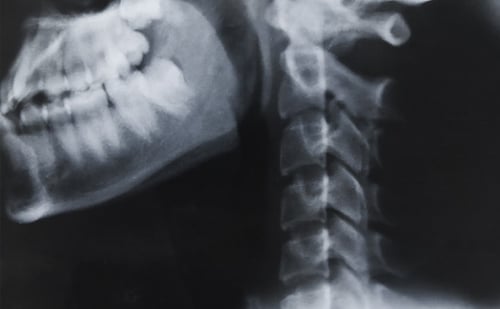
C1 C2 Vertebrae Spinal Cord Injury Spinalcord Com
Posterior C1 C2 Fusion For C1 C2 Dislocation

The Movement Of C1 C2 Segment When The Head Rotated To The Right Side Download Scientific Diagram
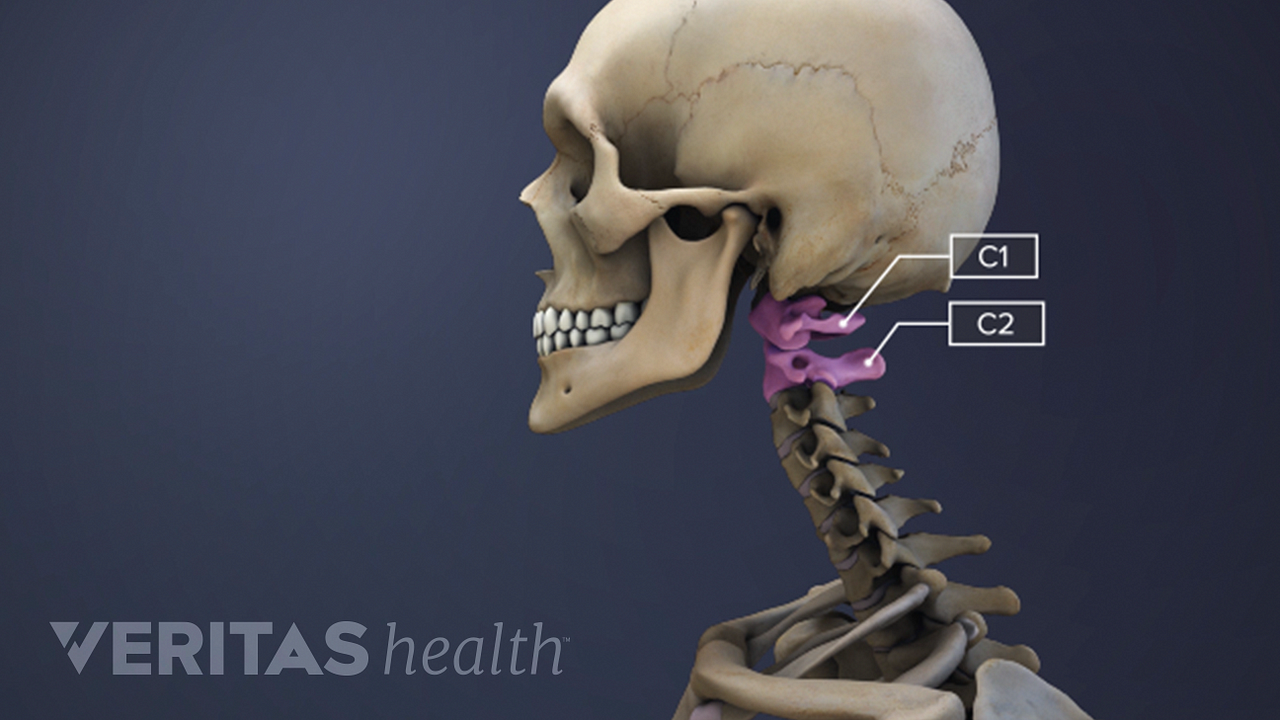
Spinal Motion Segment C1 C2 Atlantoaxial Joint Animation
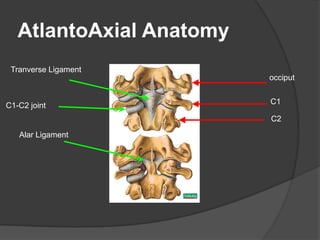
Cervical Spine Fractures Muhamma

C1 C2 Fusion Complications Are Common Centeno Schultz Clinic
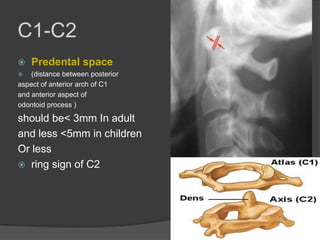
Cervical Spine Fractures Muhamma

13 3 Required Basic Anatomical And Biomechanical Knowledge Basicmedical Key

Measurement Of Range Of Motion Of The Cervical Spine And Temporomandibular Joint Musculoskeletal Key
Neck Surgery What Is Cervical Fusion C1 C2 Fusionjoel Franck Md

Vertebrae Thoracic Vertebrae Spinal Surgery Spinal Column

Measurement Of C1 C2 Fusion Angle According To Toyama Et Al 32 The Download Scientific Diagram
Posterior C1 C2 Fusion For C1 C2 Dislocation

Spinal Motion Segment C1 C2 Atlantoaxial Joint Animation

T2 Weighted Mri Images With Increased Cord Signals At C1 C2 Levels And Download Scientific Diagram

Pin By Leah Johnson Stanford On A P Human Joints Joints Anatomy Anatomy And Physiology
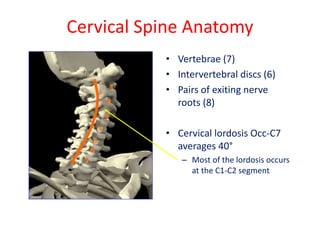
Comments
Post a Comment